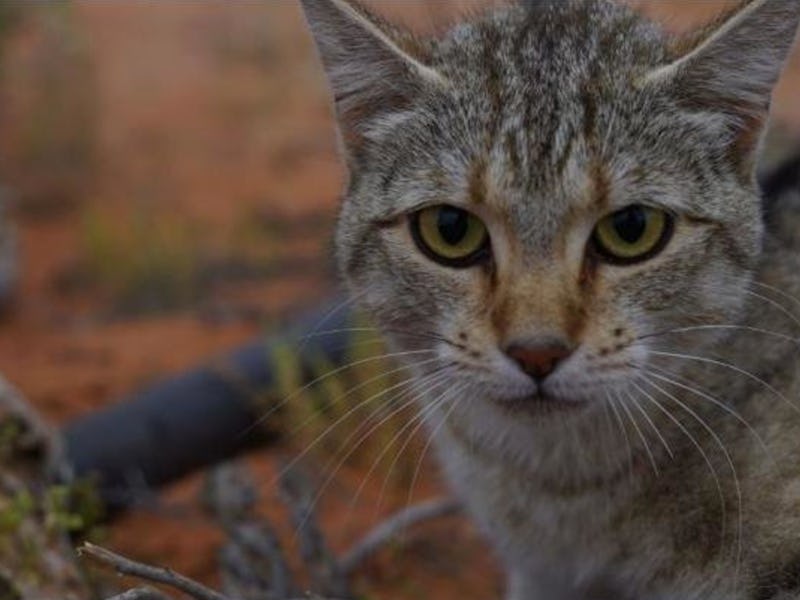Almost 100 percent of Australia Is Overrun by Feral Cats

Blessed are the feral cats, for they will inherit Australia — that is, unless, the Australian government has anything to do with it. In 2015, it announced a five-year plan to cull two million feral cats by 2020 to protect the continent’s native species, which the cats had decimated. But recently released research hints that it will take more than just culling to stop the spread of feral cats. It may finally be time to bring in the dingos.
In a study published in the December issue of Biological Conservation, a team of Australian researchers report that feral cats now cover 99.8 percent of Australia’s land area as well as 80 percent of the continent’s islands. After reviewing 100 studies to make this conclusion, they suggested that this abundance of feral cats poses a massive threat to native Australian wildlife.
While the actual number of feral cats fluctuates determining on how much prey they can get — the researchers say the population ranges from 2.1 million to 6.3 million — the greater issue is how much prey they are feasting on. Because Australia is the only continent besides Antartica that evolved without cats — Aussies can thank illegal importation from Europe for their pest problem — the wildlife life there is especially vulnerable to the feral cat’s appetites. Studies demonstrate that, so far, feral cats have caused the extinction of at least 20 Australian mammals.
This means that feral cats in Australia are seen less like this:
And more like this:
“At the moment feral cats are undermining the efforts of conservation managers and threatened species recovery teams across Australia,” said study author Sarah Legge, Ph.D., in a statement. “It is this difficulty which is pushing conservation managers into expensive, last resort conservation options like creating predator free fenced areas and establishing populations on predator-free islands.”
The density of feral cats has led some experts to believe that culling will not be the end-all solution to protecting native species. The density of feral cats in Australia is actually lower that it is in North America, but as Legge tells The Guardian, “it really doesn’t take many cats to have a significant negative effect” on Australian wildlife.
Some proposals to curb the effect of feral cats include rebuilding the habitats of small marsupials or allowing them to more easily hide and escape. But their most promising strategy may be to increase the number of wild dingos — a species of wild dog — in the outback. Researchers believe that having more wild dogs will not only deter feral cats but also prey on a different, larger species than the cats, giving smaller, more vulnerable species a chance to restore their numbers.
Cats came to Australia in the 19th century by way of convict ships from Europe. Today, they are literally refusing to “take the bait” from the Australians trying to trap and kill them, thereby turning Australia into less of a continent and more of a cat-tinent.